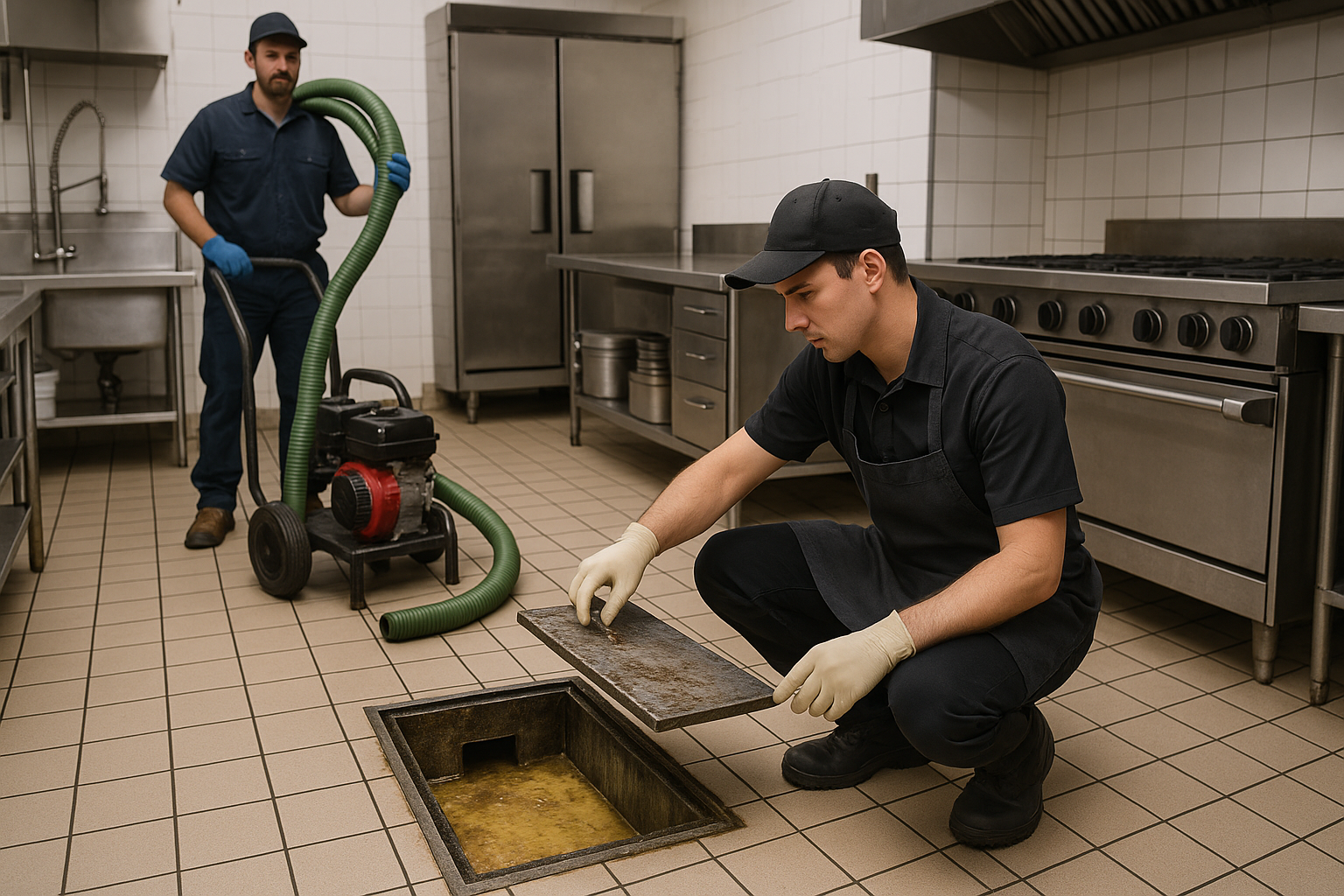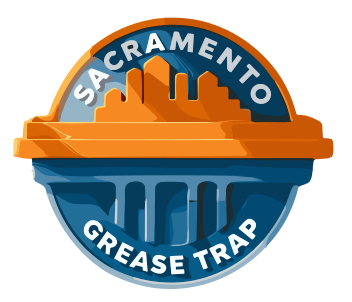Creating a Reliable Grease Trap Cleaning Schedule

The Importance of a Consistent Grease Trap Cleaning Schedule
Keeping a kitchen running smoothly is never an accident, especially for restaurants that rely on consistent service, sanitation, and compliance with Sacramento health standards. One of the biggest causes of backups and shutdowns is failing to maintain a reliable grease trap cleaning schedule. Everything seems fine until the day the trap overflows during a lunch rush or health inspectors visit unexpectedly.
Many owners assume the trap is functioning as long as drains are moving, but buildup occurs quietly. By the time symptoms appear, it is usually too late. A structured plan for grease trap cleaning prevents these emergencies and keeps your kitchen compliant.
In this guide, you will learn how to set the right cleaning frequency, understand the factors that determine your needs, and build a practical schedule that meets Sacramento’s guidelines.
Why a Consistent Grease Trap Cleaning Schedule Matters
A consistent grease trap cleaning schedule protects your business from costly plumbing failures, unpleasant odors, and Sacramento FOG (fats, oils, grease) violations. Every dishwashing cycle, cooking session, and rinse contributes to buildup. Without routine grease trap service, this accumulation leads to blockages, sewer odors, and even wastewater overflows.
A well-structured schedule:
Prevents expensive plumbing emergencies
Ensures compliance with local environmental regulations
Extends the life of your trap and plumbing system
Maintains smoother daily kitchen operations
Many operators underestimate how quickly grease traps lose efficiency. Sacramento’s dense restaurant environment means most kitchens require more frequent restaurant grease trap cleaning than they realize.
How to Build a Reliable Grease Trap Cleaning Schedule
Evaluate Kitchen Waste Output Patterns
The first step is identifying how much waste your kitchen produces. High frying volume, heavy dishwashing, or large menus all impact the ideal grease trap cleaning schedule.
Track peak service hours and note which stations contribute the most FOG waste. This provides a reliable foundation for planning your cleaning frequency.
For additional guidance, the city’s FOG recommendations can be reviewed through a helpful overview of FOG best practices provided by local specialists at FOG Best Practices.
Measure Grease Trap Fill Rates Consistently
Once you know your waste patterns, determine how fast your trap fills. Using the 25 percent rule, once your trap is one-quarter full, it needs grease trap pumping.
Inspect weekly in the beginning. Use dipsticks or inspection tools to measure levels. Document these numbers in a log. Over time, patterns become clear, allowing you to set predictable cleaning intervals.
For broader environmental guidelines, you can review federal grease management insights from the Environmental Protection Agency at EPA.
Align Frequency with Local Regulations
Sacramento enforces strict FOG ordinances requiring consistent commercial grease trap maintenance. Even if your trap appears to be functioning well, failing to adhere to regulations can lead to penalties or shutdowns.
Most restaurants follow a 30 to 90 day schedule depending on their food volume. Always match or exceed city requirements.
For additional insights specific to Sacramento, many operators reference a helpful article on how often to clean a grease trap from the team at How Often to Clean a Grease Trap.
Choose Professional Cleaning Service Providers
Basic inspections can be done in-house, but full grease trap pumping service must be completed by licensed professionals who can thoroughly remove hardened grease, pressure-wash the interior, and dispose of waste properly.
Look for technicians with experience, proper disposal methods, and dependable scheduling. A trustworthy provider helps you determine ideal frequency based on your usage.
Local kitchens often rely on the region’s dedicated grease trap cleaning company for routine maintenance. You can explore professional options through the Grease Trap Cleaning Service page at Grease Trap Cleaning Service, as well as specialized grease trap pumping at Grease Trap Pumping.
Establish Long-Term Scheduling Habits
After assessing your needs and following regulations, convert your findings into consistent scheduling habits. Set reminders, assign staff responsibilities, and keep logs updated.
Remember to adjust your schedule seasonally. Volume changes impact fill rates, so quarterly adjustments ensure proper grease interceptor cleaning.
Practical Applications and Real-World Use Cases
A Sacramento café specializing in breakfast discovered their trap reached 25 percent capacity in just six weeks. They switched to a 45-day schedule and reduced drain backups by nearly half.
A multi-location restaurant group operating deep fryers found their trap filled in under three weeks. By changing to a 20-day restaurant grease trap cleaning rotation, they eliminated odor complaints and passed inspections more easily.
Ghost kitchens operating around the clock often require cleaning every 10 to 15 days. Once they implemented structured scheduling, emergency plumbing calls dropped to zero.
These examples show the value of tailoring your schedule to your specific kitchen rather than relying on generic timelines.
Tips, Best Practices, and Common Mistakes
Prioritize proactive scheduling
Waiting until drains slow is reactive. Proactive grease trap cleaning prevents messy and expensive failures.
Train staff on daily habits
Plate scraping, strainer use, and limiting food waste can extend your grease trap cleaning schedule significantly.
Avoid DIY deep cleaning
Light checks are fine, but full grease trap cleaning near me searches should lead you to licensed professionals, not DIY attempts that leave behind hardened buildup.
Log every cleaning
A clear cleaning log supports compliance and helps you track trends to fine-tune your schedule.
Update schedules seasonally
Holiday traffic, summer demand, and menu changes can alter grease output. Seasonally updating your grease trap service ensures accuracy.
Final Takeaways
A reliable grease trap cleaning schedule is one of the best ways to protect your kitchen, comply with Sacramento guidelines, and maintain smooth daily operations. By tracking fill levels, understanding your waste output, and partnering with qualified professionals, you create a system that prevents emergencies and supports long-term efficiency.
A customized schedule based on real data keeps your trap functioning properly and your customers enjoying uninterrupted service.
If you want expert support in maintaining a consistent cleaning routine, partnering with professional Sacramento grease trap specialists can help ensure year-round reliability.
Frequently Asked Questions
How often should my grease trap be cleaned?
Most Sacramento kitchens require cleaning every 30 to 90 days, though high-frying establishments may need service every 15 to 30 days. Follow the 25 percent rule for best results.
What happens if I skip a cleaning schedule?
Skipping grease trap cleaning leads to blockages, odors, and potential fines. Hardened buildup becomes harder and more expensive to remove over time.
Can I clean my grease trap myself?
You may inspect small issues, but full grease trap pumping should be completed by professionals to ensure proper waste removal and compliance.
What size trap needs more frequent cleaning?
Smaller traps fill quickly and require more frequent commercial grease trap maintenance, while larger interceptors still need consistent monitoring.
How do I know if my schedule is effective?
Your schedule is effective if drains remain clear, odors are minimal, and you have no FOG violations. A consistent log helps you adjust frequency accurately.

Let Us Simplify Your Grease Trap Maintenance.
Proper grease trap maintenance will reduce costly repairs in the future.
.avif)

